Back in 2022, Alessandro Ongaro enlightened us with insights into the visual effects craftsmanship behind The Adam Project. Now, he unveils his journey into the Monsterverse, delving into Godzilla x Kong: The New Empire.
How did you get involved on this show?
I need to thank my Agent for this. He set up a meeting with Adam and the Producers, and fortunately, we liked each other!
What was your feeling to be part of the Monsterverse?
I was really excited to work on the next chapter of the Monsterverse series, in particular, because I really enjoyed the GvK. Plus, after meeting with Adam and Tom Hammock, the production designers, when they showed me the fantastic illustrations depicting the style, look, and visual challenges of the film, I was extremely thrilled about the project.
How was the collaboration Director Adam Wingard?
Like a dream come true. Adam is a passionate filmmaker; he knows what he wants and is highly knowledgeable about all things Monsterverse. He is a big Godzilla fan. Coming off the first film, Adam clearly understood the VFX process, which allowed us to push the VFX required for the movie to the next level without holding us back with notes late in the visual effects process. He’s also a great collaborator, very trusting and always open to suggestions, which allowed me and the VFX team to come up with new fun ideas, sometimes crazy, I would say, so long as they would help the movie, either telling the story better or making the scenes more spectacular.
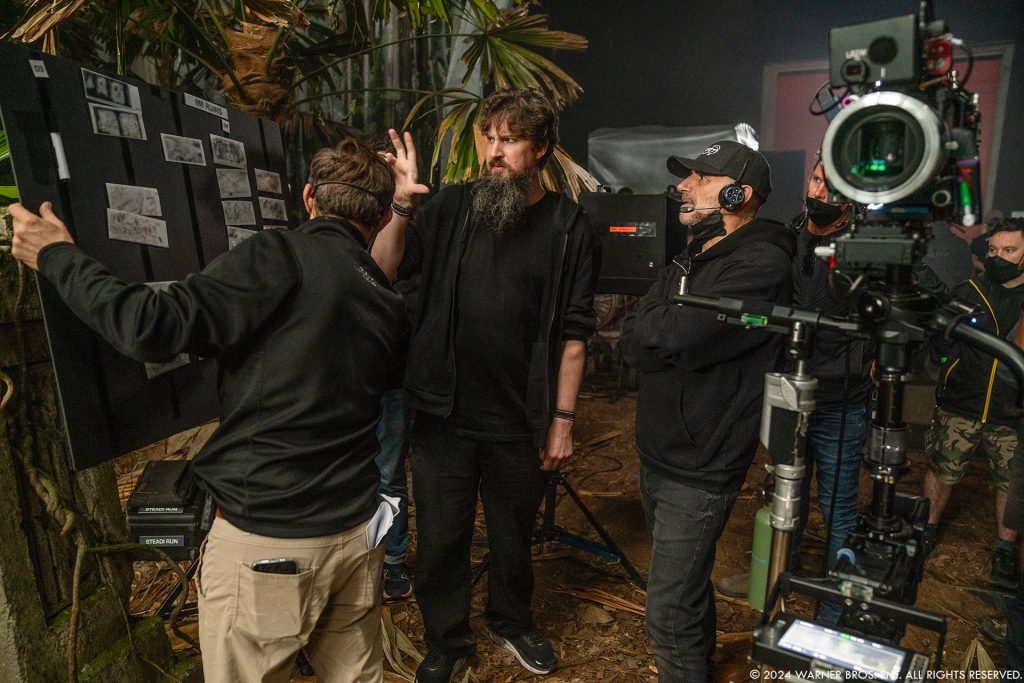
How did you organize the work with your VFX Producer?
God bless Tom Elder-Groebe, my awesome VFX Producer. At the beginning of the production, Tom and I worked closely to figure out the best way to split the fully animated part of the film, which accounts for about 55 minutes of running time and probably 75% of the total shot count. When it comes to budgeting, no one can beat Tom! We really split our duties. I took care of all the project’s creative aspects while Tom ensured it all fit within our numbers.
How did you choose the various vendors and split the work amongst them?
We all wanted to bring back Weta FX and Scanline VFX from the beginning since they both did an excellent job on GvK. So, they were our leads for most of the entire CG sequences. This worked out great because when you have so many characters, you want to minimize the number of shared characters to maintain visual consistency and, most importantly, consistent character performance. The rest of the work was split with DNEG, Luma Pictures, Supervixen Creative, Savage VFX, and Baked Studios.
Our VFX editor, Adam Avery, also did some final shots for the film, as well as helped me edit all the full CG sequences. Big kudos to Jeremy Munro and The Third Floor, who handled all the visualization required for the film, delivering a blueprint to our vendors that took most of the guesswork out of the picture.
The split was as follows:
Weta FX worked on Ape Fight, in which Kong first meets Suko and then fights OneEye and the other two apes. Kong Travel, the journey Kong embarks on with Suko. He then faces the Lake Snake Creature (we called her MamaSnake) and shares it as a gourmet dinner with Suko.
Kong Fight, where he finally meets and fights Skar King and, of course, gets his arm frozen when he faces Shimo.
Quick Exit, the scene after Kong Fight, where he’s chased by One Eye and the other apes and eventually saved by Suko.
War Party, when OneEye returned to Skar King after discovering Malenka Village and its vortex
Zero Gravity, no further explanation is needed 🙂
King Kong, the scene at the film’s end when he returns to the Skar King Lair with Suko and Shimo.
Weta FX was also in charge of building Kong, Suko, Skar King, and Shimo, including the FX Dev of its Ice Breath, the Loyal Guards, and the other apes in the Skar King realm, plus any assets unique to their scenes. And, of course, they built all the fantastic environments unique to their scenes.
Scanline worked on Intro, the very first scene of the film, in which Kong deals with the Wart Dogs.
The beginning of Ape Fight, until he walks through the waterfall.
Crawl Back, when he retreats to Malenka Village with Suko, inadvertently reveals to OneEye the location of the vortexes.
Under Repair and Arm Brace, when Kong gets the Arm Brace (now called B.E.A.S.T)
Pyramid Fight and Rio Fight, no further explanation is needed
On top of other shots throughout the film.
Scanline was also responsible for the build of Godzilla Evolved and developed the new Atomic Breath and the new skin shader, Kong Arm Brace, which required some complex re-engineering to make it properly work along with some cosmetic changes, Mothra, Wart Dogs, parrot frog and any assets unique to their scenes including the huge Hollow Earth environments, the beautiful Nile River beats, and the Cairo Environment. And, of course, they had the fully digital Rio De Janeiro to build and destroy!
DNEG handled most of the more traditional live-action scenes of the film, starting with Rome in the opening scene, where Godzilla fights Scylla, and when later on, he wakes up and walks through the city.
Monarch Base, Kong Returns, Tooth Extraction, and Through The Vortex is the part of the film where Kong emerges from the vortex, gets his tooth replaced by Trapper, and eventually jumps back into the vortex, followed by our human heroes.
All the scenes in Hollow Earth with the humans, like the Destroyed Base, the Carnivorous tree beat, the ruin, the magical Veil, and Malenka Square with the giant crystal pyramids, the ceremonial chambers, where the Iwi queen takes them into the giant pyramid, and finally, the Engineering Room, where we see the Iwi technology at work.
DNEG also worked on the shots when Godzilla Evolved breaks through the Iceberg after his transformation and jumps off the Rock of Gibraltar. As far as assets, besides, of course, all the environment work required in Rome and Monarch base, they modified Scylla, built the Mule and Heav 2.0, designed the new Vortex, designed the Veil in Hollow Earth, built the Malenka Environment, the giant Pyramids both outside and inside ( which was quite challenging), and the engineering room, along with any unique assets required for their scene.
Luma Pictures worked on Military Convoy, in which Godzilla is at the Nuclear Power Plant attacked by French drones.
Tiamat is the underwater scene in the Arctic when Godzilla fights with Tiamat and eventually takes over its nest. Glacier Cavern is the scene right after where we find Godzilla hibernating in the ice cocoon, evolving and breaking through the ice.
Supervixen was in charge of all the film’s required Screen Graphics and their compositing. They also designed the very cool graphics that show the new features of Godzilla when he evolves, and the Tiamat beat. On top of that, they were responsible for sneaking my name wherever they could! 🙂
Finally, Savage and Baked worked on invisible comp work throughout the film.
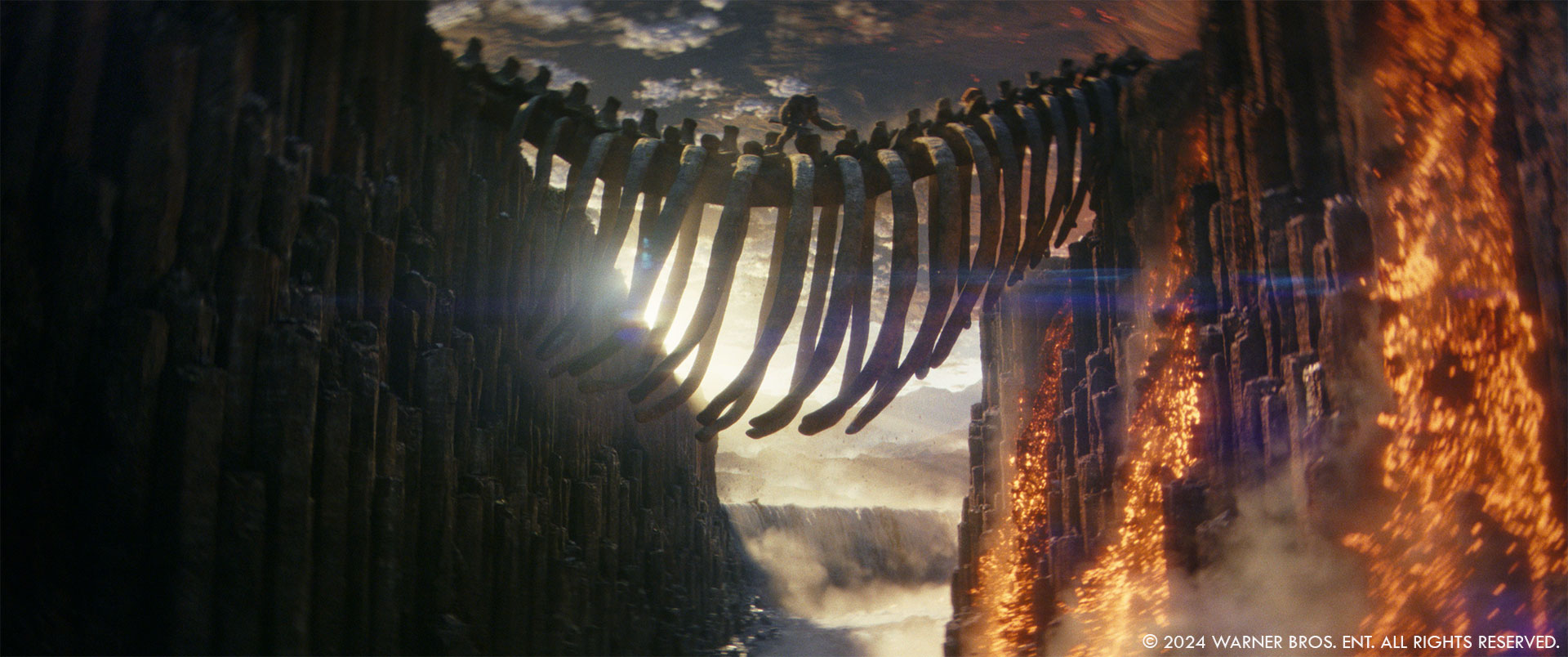
Could you elaborate on the process behind creating the visual effects for Godzilla and Kong, particularly in terms of how you updated their iconic appearances since the previous movie?
When I joined the project, most of the design of our hero creatures was already done. Jared Krichevsky from Legacy Effects, who had worked with Adam Wingard on GvK, was the lead creature designer, and he’s responsible for Godzilla Evolved, Skar King, Suko, Shimo, and some of the other Apes we see in the film.
Weta FX and Scanline did some extra work on them, mainly to allow for proper locomotion. For instance, Weta adjusted Shimo’s hip placements to give her the suitable range of motion required for appropriate animation. We also adjusted the placement of the crystals that protrude on his back. With Scanline, we slightly modified Godzilla Evolved proportions, like enlarging its head and replacing the elbow spurs to allow a better range of motion. With Weta and Scanline, we mostly worked on the detailing, and their look dev, including Shimo Ice FX and Godzilla, Evolved new Atomic Breath and supercharged look. And Skar King Eye Look.
We also had Weta Workshop help with some other creatures required in the film, including OneEye, the ape that attacks Kong at the beginning of the film, the Vertacines, the parrot Frog, the Wart Dogs, and the Snake Creature. We also reworked Suko’s body with Weta Workshop to give him more musculature and ape-like posture while maintaining a cute face.
For Kong, Weta FX gave him some extra grey hair, grew its beard a bit, made the fur on its shoulder a touch fluffier, adjusted the scar on its back that we carried over from GvK, and finally designed the new metal tooth.
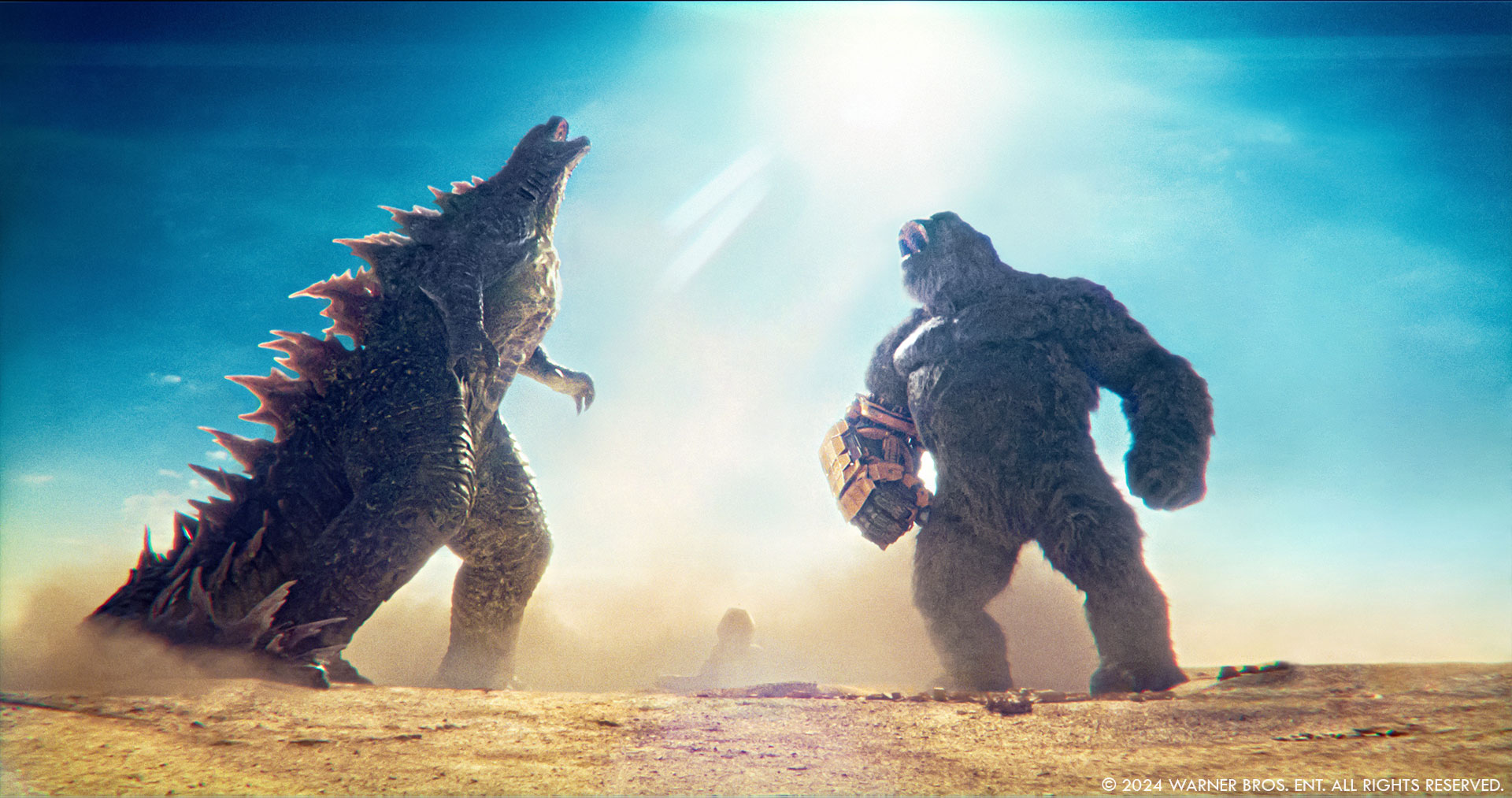
What were some of the critical challenges faced by the visual effects team in portraying the evolution of Godzilla and Kong throughout the film?
The complexity of GxK was related to the amount of storytelling needed, the different personalities of the characters, the variety of huge, complex environments, and dramatic lighting. Half of the film is basically a big silent movie done in CG, and that was arguably the biggest challenge. So much of the story has been told in the different full CG sequences with just body language/expressions, timing, framing, and virtual cinematography, and for me, that was the number one priority from day one. For that reason, I needed VFX partners who could take ownership of their work and push the quality without being handheld. And we got lucky with that!
As stated before, one of the biggest challenges was ensuring we maintained visual continuity between the different vendors. The performance of critical characters like Kong, Suko, Skar King, and Shimo had to feel as seamless as possible, and this was a challenging task. But we were very fortunate to have a stellar team in charge of the Character Animation.
In particular, I have to give much credit to Ludo Chailloleau and his team at Weta, Eric Petey, and the Scanline animation team. From the very beginning, they all killed it and managed to set the right personalities and behavior of our Titans, which allowed us to focus on the storytelling.
Another critical aspect of the film was dealing with the scale of the Monsters. Early in prep, we agreed to use the different senses of scale based on the situation so that when we’re just with the Monsters, we treat them like they were human-sized creatures rather than 350/400ft tall. This dramatically helped design and choreograph the fight scenes, arguably the film’s most complex aspect from a design perspective. This is also made possible by the excellent work Jeremy Munro and the team at The Third Floor brought to the project during the 15-month period they worked on the film.
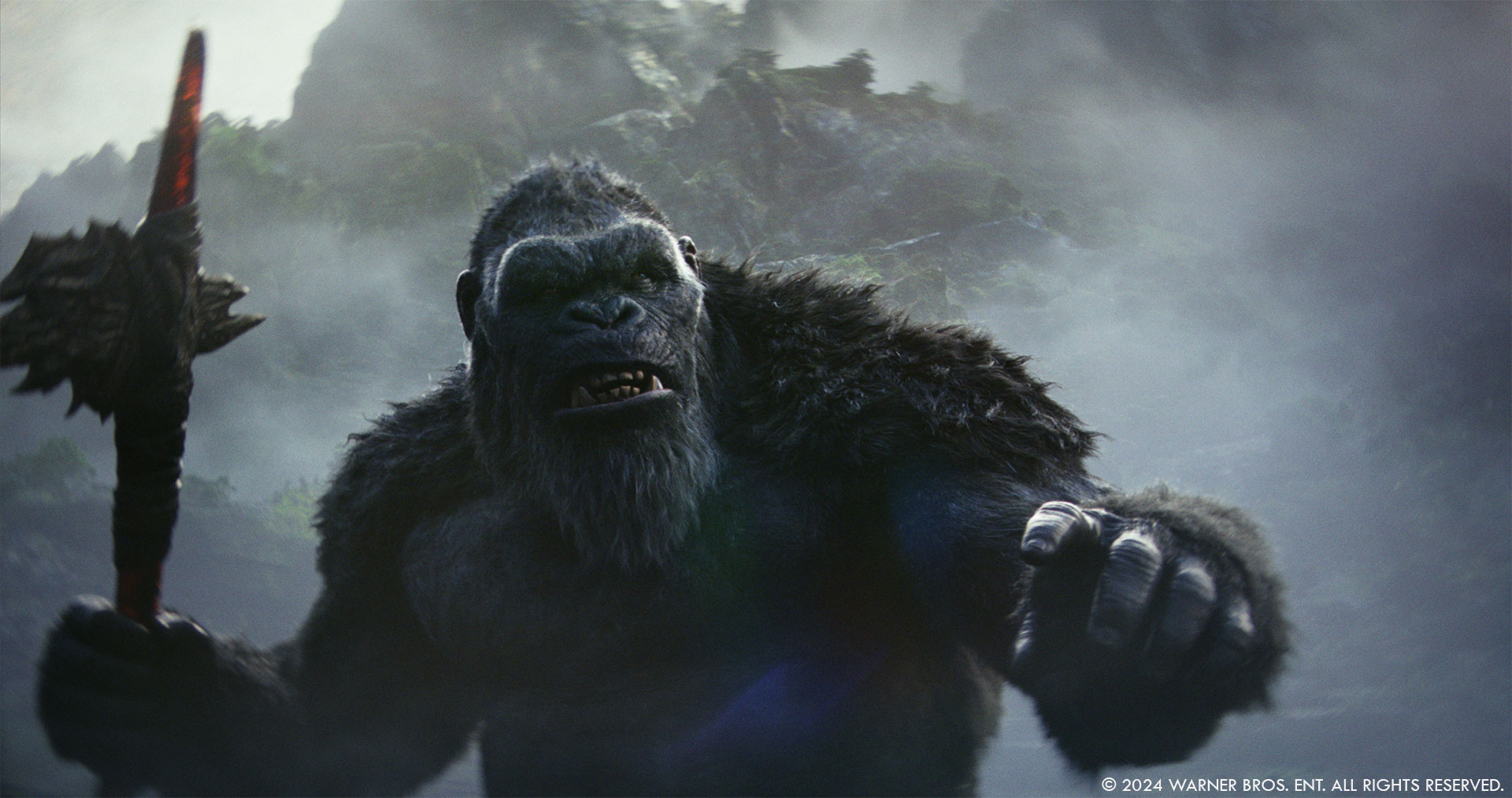
Could you walk us through the creative process behind bringing to life the new creatures like Suko and Skar King? What were some of the key inspirations and challenges faced during their development?
From the very beginning, we wanted Suko to feel like the little kid who wants to play with the adults; he’s been manipulated by Star King and his loyal apes, and, although warm at heart, he always wanted to fit in, to the point he acts as a bait for Kong and also tries to lure him into the lake where the Snake Creature ( we called her mama-snake) lived. Ultimately, he becomes what people like to refer to him online, the son of Kong, and creates a bond with him to the point that he is willing to sacrifice his loyalty to Skar King to help Kong when hurt. This is how we briefed Ludo and the animation team at Weta. And they nailed it right away, bringing so much to the table and giving him that behavior that was a bit naughty but at the same time adorable, which was very important for us.
Skar King had to be mean, but in its way, kind of a crazy gangster with sadistic behavior. Although Jared mainly did the design, it was slightly changed with Weta. Initially, he was supposed to be balder, but I remember at the first iterations, my initial reaction was, man, he looks like an old balding man! So, without second thoughts, I work with Kevin and the Weta team to grow more hair. The biggest challenge from an animation standpoint was his long arms, which were very orangutan-like. So we leveraged that aspect, making him very agile and quick, which, besides the bone-whip, was an unexpected challenge for Kong. We also wanted him to have a sneaky, furtive look, never straight up and always with that superior attitude. Once again, the team at Weta captured that look, adding some nuances to his walk, body posture, and expressions that we carried over throughout the film.
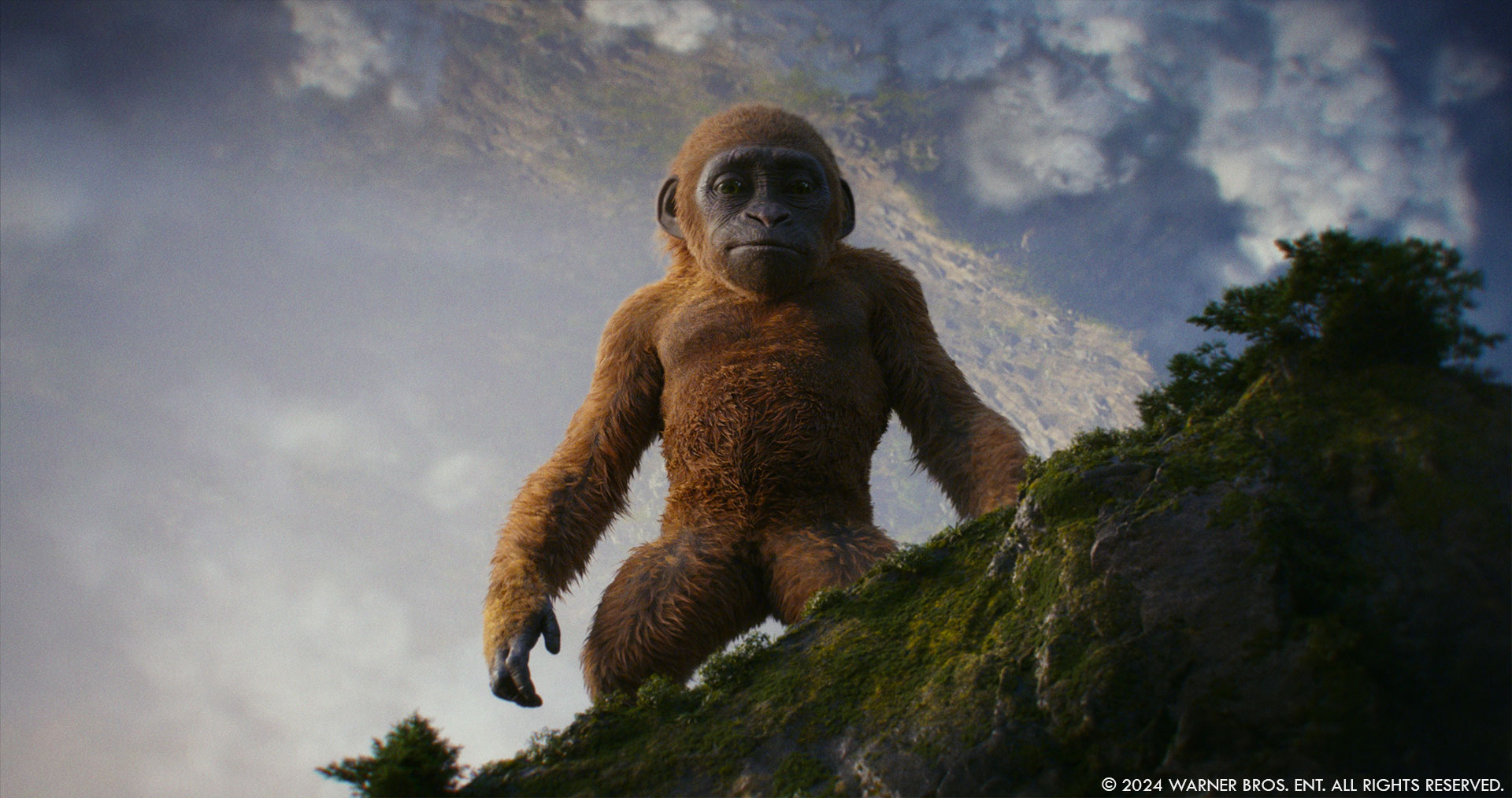
What technical and creative challenges arise when designing and animating colossal creatures like Godzilla and Kong, balancing between realism and fantastical elements?
We knew the most significant challenge from the beginning was bringing these giant monsters to life. One hour of film in full CG animation is a process on its own, and when you have Monsters that are 300-400 feet tall, you know you have to make compromises. We knew that we couldn’t just animate them at their giant scale. It wouldn’t have helped with the action scenes and would have made the film much longer. We also knew fans would have commented on that. Still, ultimately, we created a style that was pretty unique and worked perfectly with our story, balancing the scale of their performance and effects simulation on a scene-by-scene basis, sometimes going slower and sometimes faster. We
achieved a final look that I would define as hyper-realistic; we never aimed for photorealism per se, which has worked well. This doesn’t mean we sacrificed fine details; there is so much in every scene, from the vegetation, rock formations, lava flow, and majestic open space environment that add to the final product. We designed the shots with the IMAX 1:90 aspect ratio to maximize this experience and enjoy these massive locations. I shot a lot of aerial photography in Iceland with a six-camera array rig that helped capture all the fine details that naturally happen in nature. However, our VFX vendors also added a lot on their own. Like the Cairo environment, which is entirely CG, Skar King Lair with those beautiful volcanic rocks and Lava flows, or the Malenka Square Pyramids, which was challenging due to their scale and magical appearance.
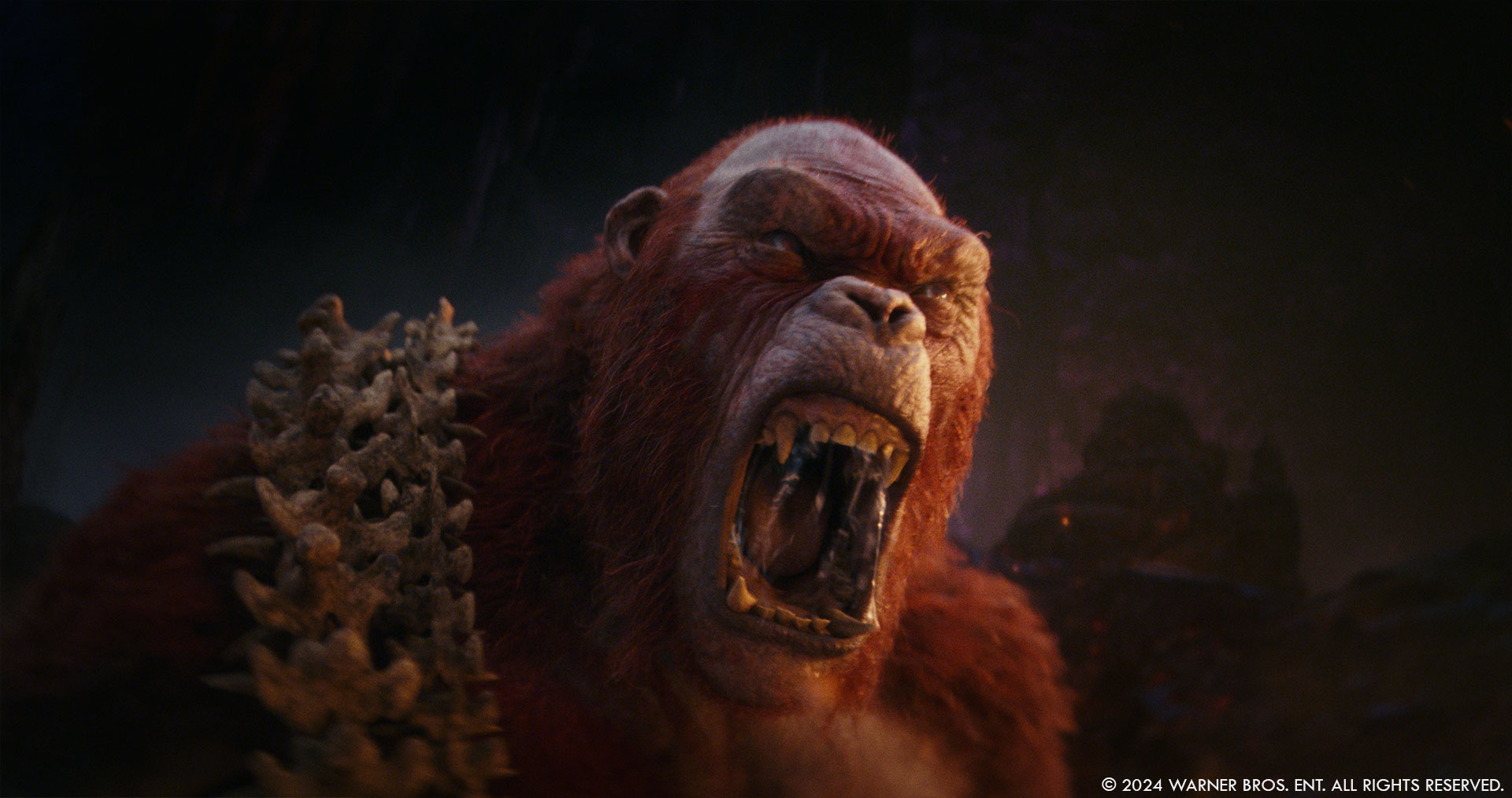
With advancements in CGI technology, how do you ensure that giant creatures like Godzilla and Kong interact seamlessly with their human counterparts and the surrounding environment?
Except for Rome, Gibraltar, and a few selected moments on Monarch Island [like the tooth extraction] and Rio, everything else was entirely CG, which made the process more straightforward in the sense of the principal photography. We don’t have much interaction between the Monsters and the humans, and given the scale of Kong and Godzilla, we didn’t have to worry too much about eye lines and such. For the scene where Trapper lands on Kong’s mouth, the art dept built a piece of the Mule Vehicle and part of Kong’s mouth so that the actor could interact with him at the proper scale; this was then entirely replaced by DNEG in post. For other scenes, like when Kong shows up with Suko in front of the human team, we went old school and used laser pointers.
For Rome (and the beginning of Rio), we relied on some good Previs from Jeremy and the team at The Third Floor. This was very helpful in blocking the shots during the day. I directed the second unit for the film, which helped us go through some of the beats more efficiently. We also had Cyclops running on my iPad on set. This tool developed by Third Floor is a real-time AR software that allows us to see the shots through an approximation of the film lenses with the creatures placed correctly in the frame. It helped our camera operators, the DP, the extras, and the stunts to see the scene beforehand.
For the flying scene in the Heav, the art department built a full-scale cockpit mounted on a hydraulic system surrounded by a curved LED wall. We ran some of the footage I shot in Iceland, which helped our talents feel like they were in this magical Hollow Earth world rather than just looking at a giant blue screen. I also prepared a rudimentary video of flashing lights and spiraling colored lines to represent the Vortex when they fly through it. This also helped add some interactive lighting to the cast.
The art department built some other set pieces to help us in a few scenes, like a few blocks of the Giza Pyramid, the top of the head of the sphinx, and some beautiful Hollow Earth pieces that Scanline extended in CG.
One of the trickiest aspects of the live-action shoot was Malenka Square. The art department built a beautiful set, but we didn’t have anything to represent the big crystal pyramid. On top of that, there was a very complicated programmable lighting rig with colored lights, which had to be correctly matched by DNEG. We tried to help with videos of the lights we recorded with our witness cameras, which were sound-synced to the hero takes.
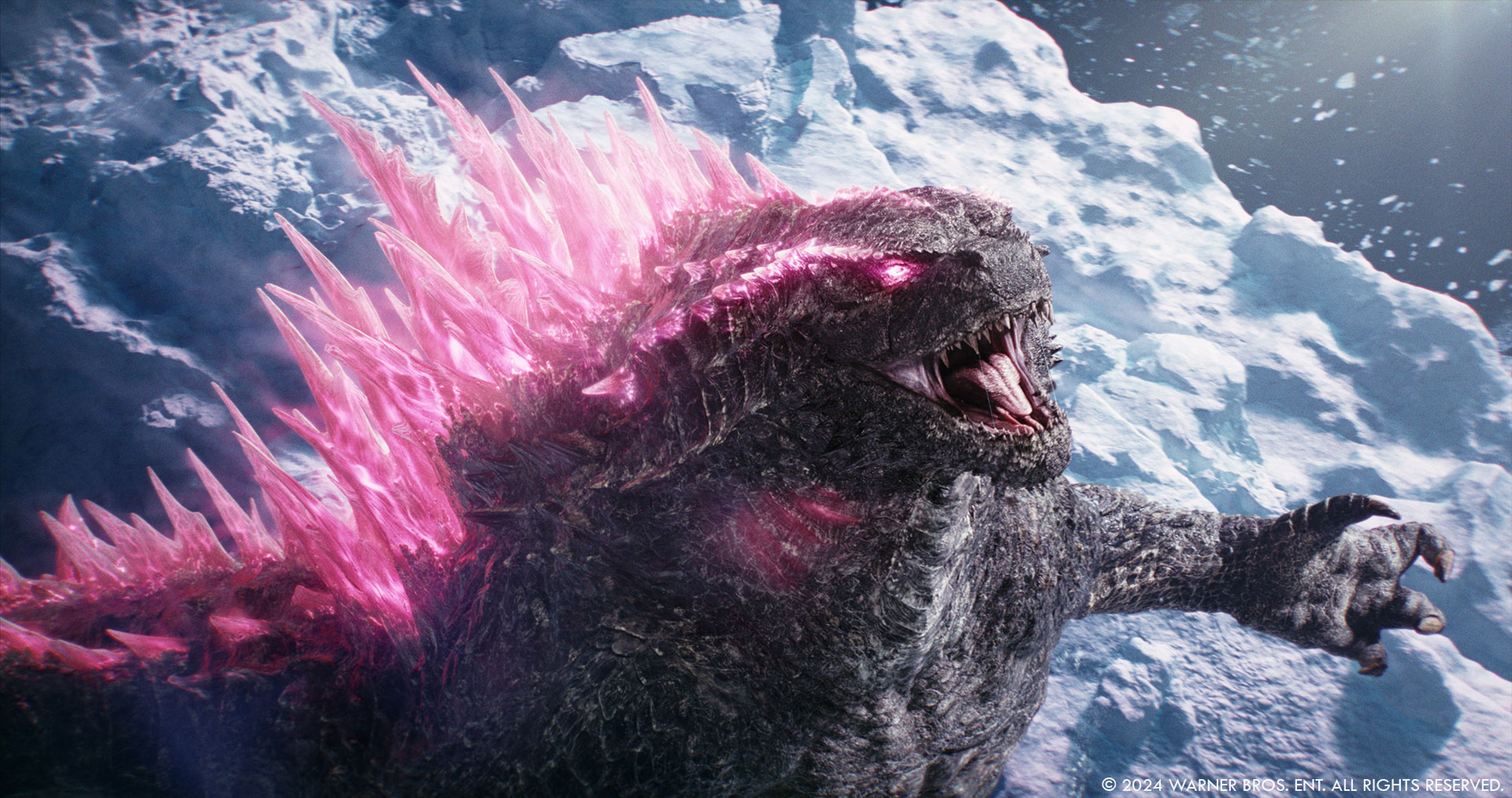
Could you walk us through the intricate choreography involved in staging the epic battles between Godzilla and Kong?
Previs! We really took the Previs to the next level. If you know the animation pipeline, this acted as our rough layout pass. I think having worked for so many years at DreamWorks Animation really helped with that. I worked closely with Jeremy and his team for 15 months to give our Vendors detailed blueprints of these massive scenes.
I would get some storyboards that Adam had worked on with Richard Bennett, our main storyboard artist. Some were more detailed than others, but as you can imagine, translating these massive action beats from drawing to 3D was quite some work. This was one of the aspects of my job that made me so attached to the film. It’s been challenging but so much fun simultaneously, like when I had the idea of Kong using Suko as a weapon or Godzilla doing the Suplex move in the pyramid fights. I remember also gathering some references from other films [there is an episode of The Punisher TV show where he fights with some big Russian guys inside a Gym that we used as a reference for Kong fighting the apes when he first meets Sudo] and also dropped some Easter Eggs here and there [hint: Gladiator and Die Hard].
I would also work closely with my VFX Editor, making early editorial decisions to present Adam and the Producer scenes that already had a good flow. We would then discuss the changes and go back to work with TTF. Ultimately, it was a big collaboration effort from everyone involved. Third Floor really brought so much to the table, and our Vendors pushed the animation, performance, camera animation, etc. to the next level thanks to their expertise and fantastic skills, adding to it whenever possible. Adam, our main editor, Josh Shaffer, and Alex Garcia, our producer, made the whole process as smooth as possible by providing constructive feedback, concise notes, and being always open to suggestions.
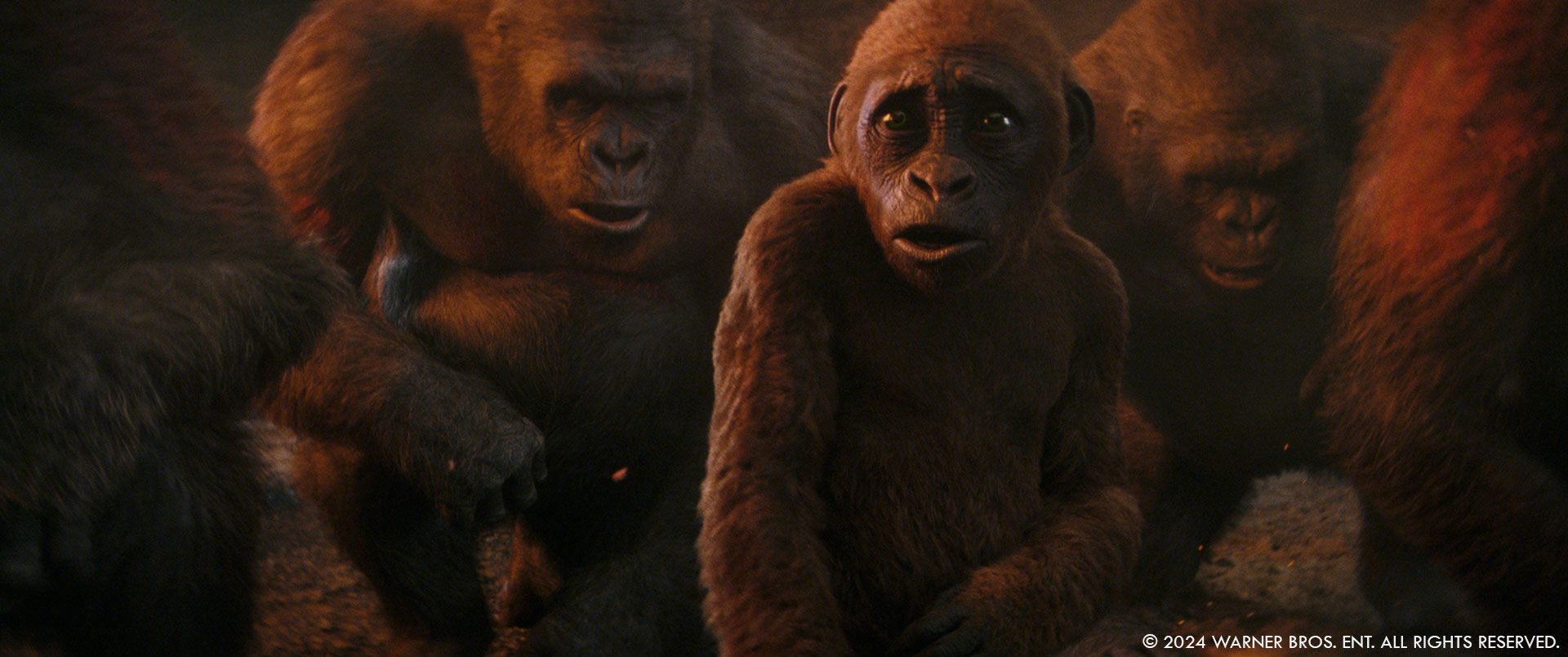
Can you elaborate on the creative process behind envisioning the destruction of iconic cities like Rome and Rio de Janeiro?
I would say Rome was pretty straightforward compared to the complexity of Rio. The destructions were pretty contained since some iconic monuments couldn’t be touched. For example, the piece of the Colosseum Godzilla breaks with his foot when he steps out was added geometry to the actual plate since we weren’t allowed by the Rome Minister of Culture to break any piece of it. The house with the Godzilla Graffiti he stepped on was heavily modified in VFX to look much different from the original photography for the same reason.
But when it comes to Rio, it’s a different story. The scene also changed substantially during post-production, so except for the first section, Scanline had to redesign some fights and, consequently, the destructions involved. We shot for five days in Rio; once again, I directed the second unit, so we invited Nick Crew to sit with us so he could see firsthand the different shots and make sure everything was working out for them. We did single-camera aerial photography, covering as much as we could of the part of the city where we knew the big fight and destruction would happen. We shot a lot from the ground as well, but everything else was turned into full CG except for the beginning when we were at the beach. To deal with the city’s massive scale, lidar scanning from the ground and rooftop wasn’t feasible, so we hired a company based in LA called Geo1:1 (part of NV5 Geospatial), which traveled with us to Rio. They have this excellent multi-cam system mounted on a helicopter that does aerial Lidar Scanning and simultaneously captures high-resolution images for photogrammetry. I can only imagine the amount of data Scanline had to deal with.
Can you elaborate on the creative process behind bringing the concept of Hollow Earth to life?
Hollow Earth was a pure joy of creativity 🙂 Tom Hammock, our Production Designer, had already gathered a lot of excellent reference photography and worked on the same beautiful concept art that was the foundation of our work. I flew all over Iceland with a six-camera array for four days to capture as much photography as possible, took a lot of stills, and gathered as many more references as possible. From the vast green moss-covered plains, filled with river and colored rock formations, to the more volcanic rock locations that feel like they are from 1 million years ago, to some other iconic places like the Dettifoss Waterfall (the same as the scene in Prometheus).
Armed with this material and the art dept references, we blocked the environments in the Previs phase to have a bare stage for our creatures to perform. We would also make changes to the environment as needed. One of the trickiest areas to design was the Malenka Environment because so much of the film is happening there, from when our human heroes get captured by the Iwis to when Kong and Suko show up and, ultimately, the Zero Gravity battle. Plus, it was shared between 3 vendors. There was quite some cheating happening here, but I doubt the audience ever noticed it because we always ensured there were some connecting tissues (Like the Pyramids or the Big Crystals). We also moved or placed some elements per shot if they helped the visual. For example, the bright crystal behind Kong and Godzilla jumping toward Skar King and Shimo at the beginning of the Zero G fight was placed just so that we could get some dramatic lighting for that specific moment.
Regarding lighting, we wanted to differentiate the area of Hollow Earth, where Kong lives, from the Skar King Lair. This is primarily noticeable in the wide establishing shot with the giant Bone Bridge, where the right side of the frame is moody with dark volcanic rocks and lava flow, while the left side still has some greenery and a warmer tone.
Again, because we traveled to many locations in Hollow Earth, we played with the lighting to convey the right emotions Adam was after. I empowered our vendors to push their creativity. Once again, the team at Scanline, Weta, and DNEG didn’t fail, delivering some breathtaking shots, like the beautiful Iceland-inspired environments in the opening scene with massive waterfalls or the dark, moody, gritty environment with the beautifully crafted lava waterfall for the Skar King Lair.
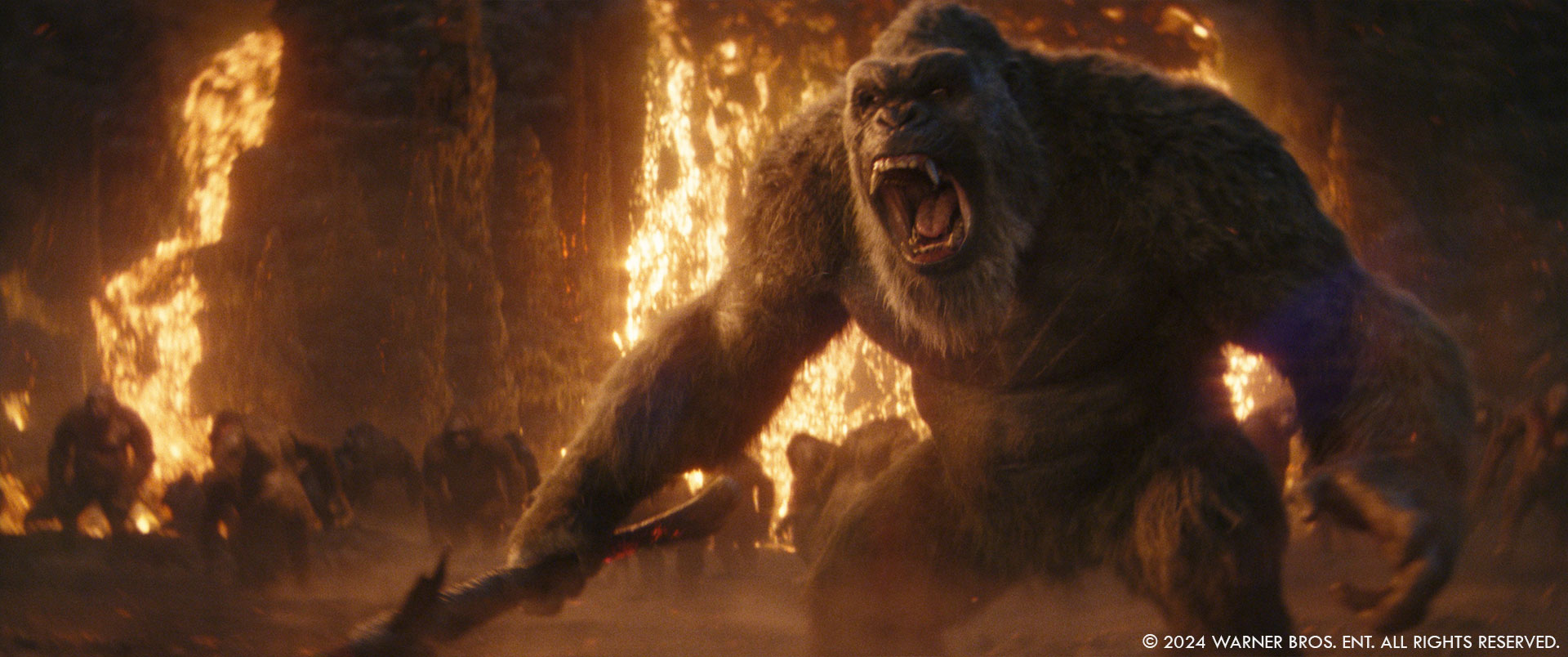
Were there any memorable moments or scenes from the film that you found particularly rewarding or challenging to work on from a visual effects standpoint?
The whole movie was rewarding and challenging at the same time. I can’t pick a favorite aspect since they all have some spectacular work in them that came with their challenges, be it the scale of the work, the storytelling involved, or the more magical or abstract aspects.
It was pure joy and satisfaction reviewing the work with Adam at our daily sessions. The trust he gave us was pure gold, and the quality of the animation that the VFX artists delivered was outstanding. This was enough to overcome any outstanding challenges because I knew I had some very strong partners who never let us down.
Looking back on the project, what aspects of the visual effects are you most proud of?
GxK was a pretty unique project for me as a Visual Effects Supervisor because I was more heavily involved with the storytelling than usual. I never looked at the movie from a merely visual effects perspective. Having had the opportunity to direct the 2nd unit for the film, traveling through so many continents, working with a fantastic team of artists, and being supported by a team of professionals made this film so fulfilling on a personal level. And I couldn’t have done it without the fantastic support from everyone involved. My shoot Production Manager, Josh Hakim, has been on my side throughout principal photography and was with me while directing the second unit, acting as my On-Set VFX Supervisor, which was a life safer. And I wanted to give a shoutout to my fantastic post-production team! Alleigh, Nora, Amy, Taylor, and Andrew were all such dedicated and professional team members. They truly made my entire working experience so much better!
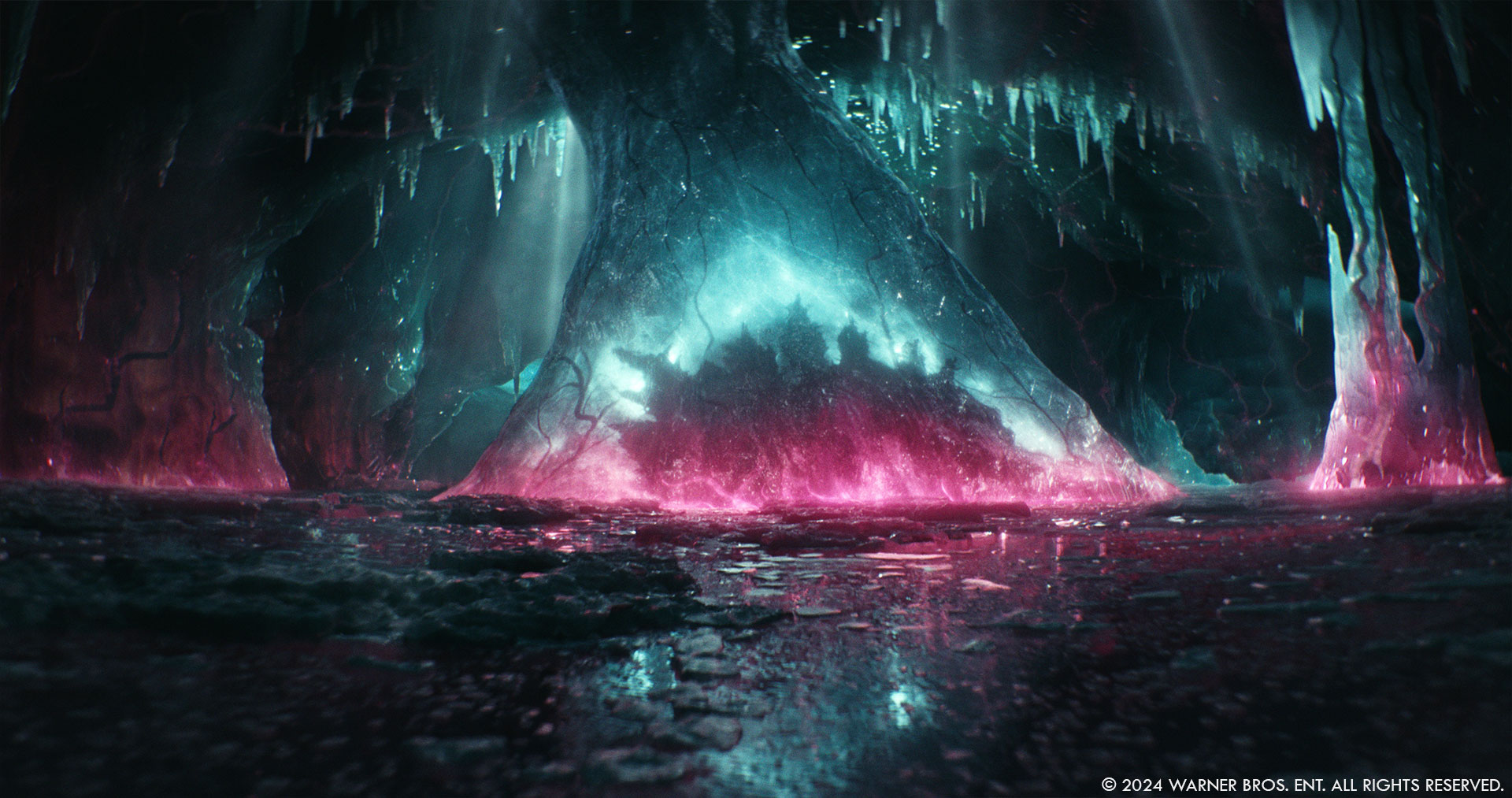
Trick question, are you team Godzilla or Kong?
I’m Team Kong!
How long have you worked on this show?
Exactly two years and two days.
What’s the VFX shots count?
There were around 1400 shots, but consider that about 1000 of these were fully CG and huge.
What is your next project?
I’m currently working on Captain America 4.
A big thanks for your time.
WANT TO KNOW MORE?
DNEG: Dedicated page about Godzilla x Kong: The New Empire on DNEG website.
Weta FX: Dedicated page about Godzilla x Kong: The New Empire on Weta FX website.
© Vincent Frei – The Art of VFX – 2024




